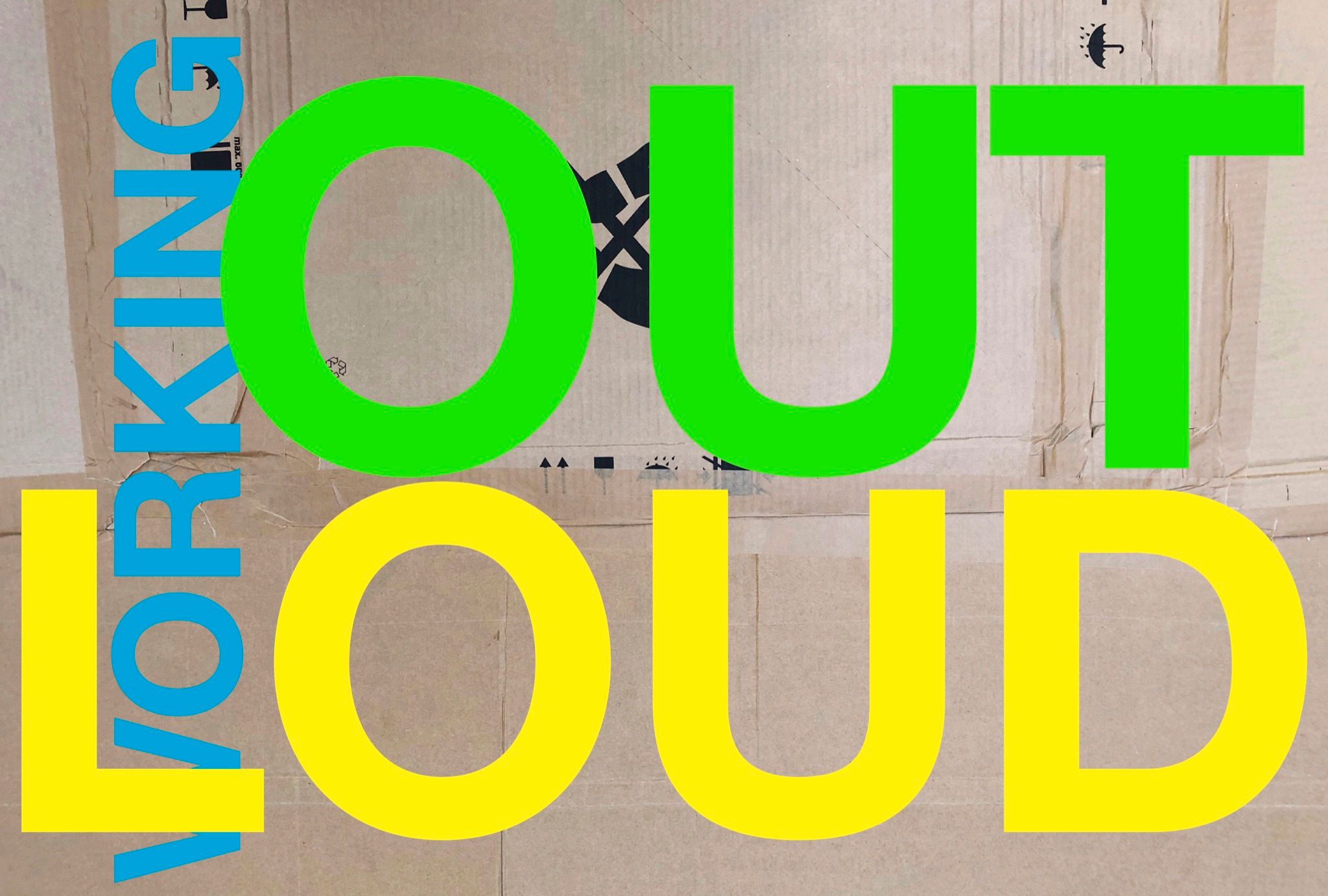Working Out Loud (Part I): An Interview with JOHN STEPPER, Author of “Working Out Loud For a Better Career and Life”
|Victoria Camblin
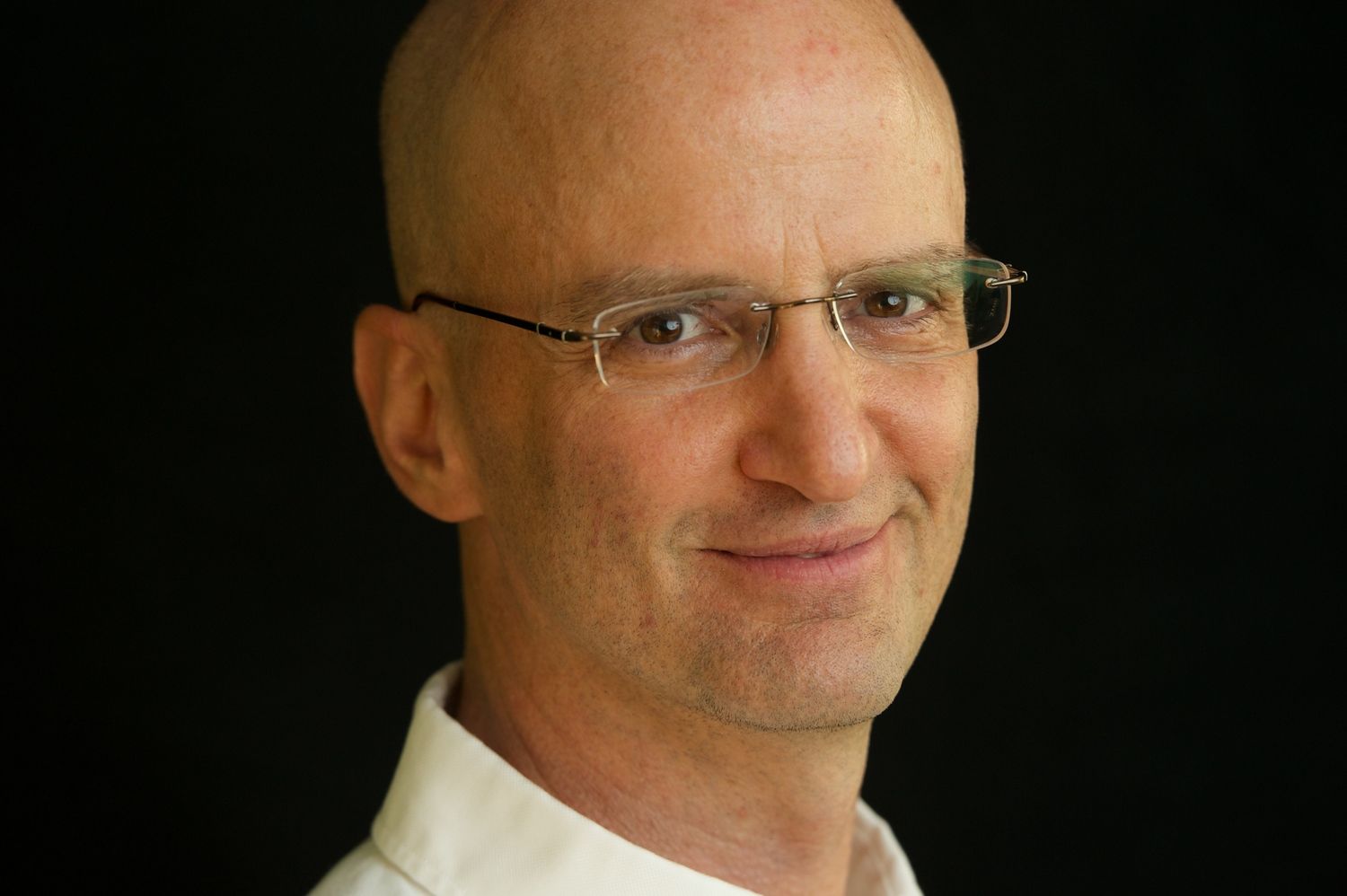
After decades of working for “big companies” – think Deutsche Bank and Morgan Stanley – John Stepper was unhappy. He saw that the majority of his colleagues were too, their potential wasted on the dehumanizing, competitive environment of big business. They talked about a culture of collaboration inspired by the advent of online networking, but the way they worked was stuck in a pre-Internet landscape of siloed divisions, corporate hierarchy, and checklist efficiency prioritized over personal experience and growth. Stepper’s own need for autonomy and dialogue led him to develop Working Out Loud, a work model based on collective knowledge, contributing to the community, and the purposeful cultivation of opportunities. His goal: to tap into the superpower that is generosity and shared purpose. But how?
In order to break free of deeply ingrained work habits, Stepper developed the idea of Working Out Loud Circles: small peer support groups of four to five people convened around a common topic or goal. Meeting face to face or virtually over the course of 12 weeks, participants use structured guides to build relationships, create new habits, and gain self-confidence that can be applied to any future aim. “You’re more effective because you have access to more people, knowledge, and opportunities that can help you,” Stepper writes on his website. “You feel better too, because your bigger network of meaningful relationships gives you a greater sense of control, competence, and connection.” As individuals become more motivated and empowered, organizations become more agile and innovative – results that can be achieved without overhauling established corporate frameworks, but that will, according to proponents of WOL, shift company structures for good.
Stepper considers WOL to be a “small movement,” which grew out of a self-published book, a TEDx talk, and some fruitful connections – notably at Bosch, then Daimler, BMW, Siemens, and others. It is now used as a peer support tool in more than 40 countries. To him, this feels like just the beginning: Stepper wants to expand the movement to historically disadvantaged groups. “Instead of forcing them to wait for the system to give them equal access,” he says, “I want to enable them to earn that access for themselves.”
Stepper’s influences are many – they include corporate and startup wisdom, new and ancient spiritual traditions, neuroscientific and psychological research, and personal experience. But his conclusion is simple: empathy is the new fuel for sustainable change.
Interview: Victoria Camblin
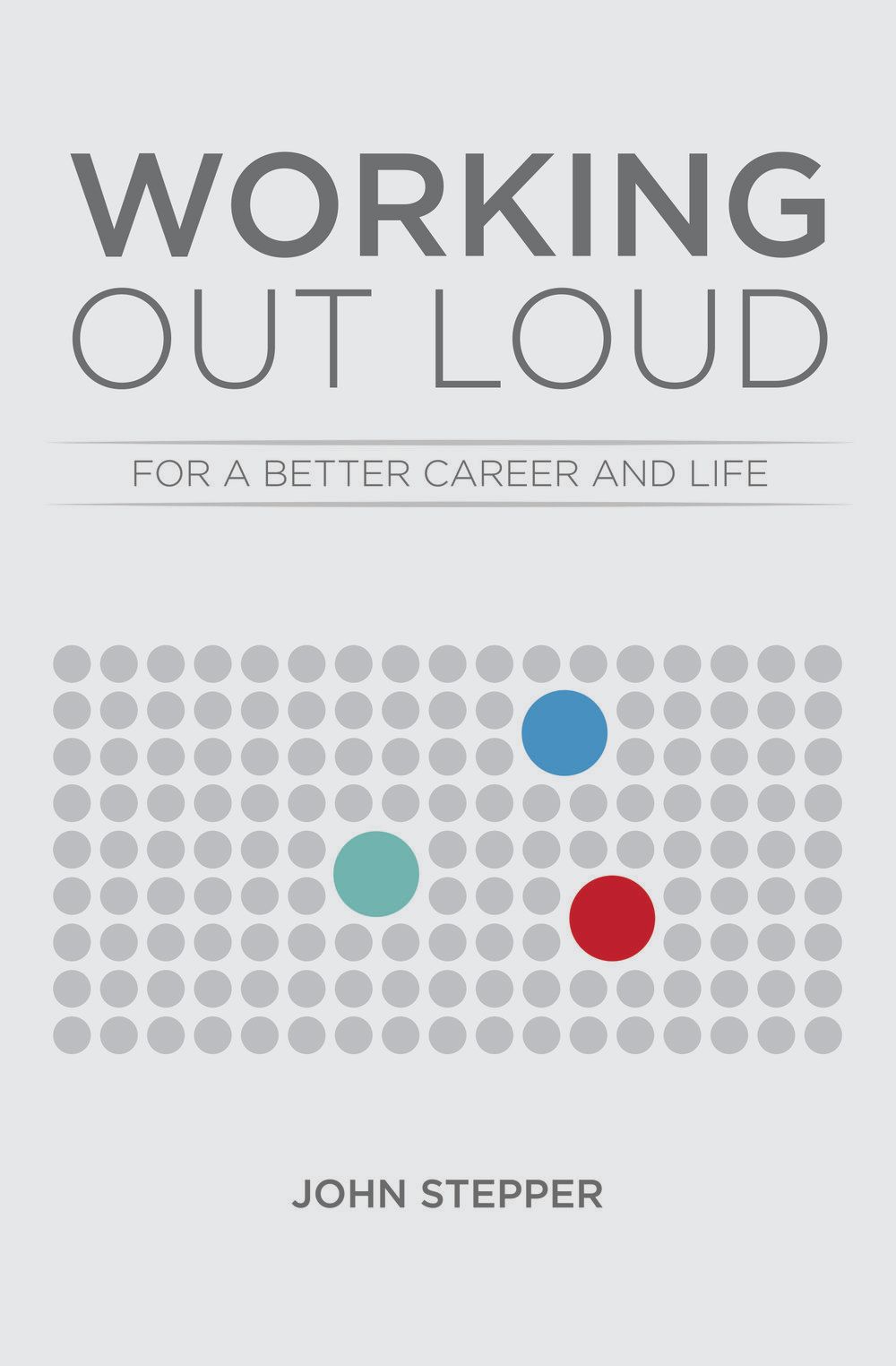
“Helping organizations be more open & collaborative. Helping people access more possibilities.”
When did the fundamental idea for WOL strike?
It was 2010, and the Internet was starting to become more social. Anybody could publish, you could connect with anybody, and networks were making it into the workplace. I thought, “This will change everything!” Employees were beginning to use [Microsoft’s] Yammer for work, typically without the company’s knowledge or permission. Smaller companies were adopting Gmail and other Google collaboration tools. I worked at Deutsche Bank, of all places, and I introduced an internal social network there. Companies called these “social tools,” “enterprise social networks,” or “social intranets.” We got something like 80,000 people to use it. I was ready for the great awakening. In a big company, where it’s all about the performance review, and your boss, this felt like the great liberator. It turned out not to be the case. Most people didn’t have the habits or the mindset to make use of this kind of thing. You could make your work visible, but people were like, “Why?” Or, “I’m busy.” Or, “What if I say something stupid?” I was talking about the promised land, but inertia is a very powerful thing, and we kept working the way we were working.
Was there something in the global political or cultural climate around 2010 that made corporations see they had to change somehow? Social media had been around for a few years at that stage.
In the world at large, social media was exploding. The Arab Spring, made possible in part by communications and coordination on Twitter, was in 2010. So there was this collective sense that things were becoming more open and democratic – that everyone has a voice and has a right for that voice to be heard. We didn’t think much about the downsides of the tools, or how to control them. Our feeling of optimism was unbridled.
And yet there was still this sense of fear. This is something very resonant in creative industries: that “what if I say something stupid” doubt when you’re faced with externalizing something. Is WOL a method of overcoming anxiety?
Yes. What I see constantly is people’s resistance to writing something down because it won’t be good enough. The mistake I made early on was asking people to do too much too soon. The first step is just finding some connections in a psychologically safe space – we don’t have people posting stuff on the intranet or Internet until much later in the process. You share some of what you’re doing – mostly small things, often face to face at first – and it leads to positive outcomes: maybe you have a nice interaction with somebody from another country, or maybe you learn something. What happens as a consequence is that people open up. They start to feel like they have something to contribute. They realize not everyone is going to love what they have to offer, and that’s OK. The key is to do that somewhere you can experiment or try things without fear or judgment or shame. The Internet is not that safe space.
It’s scary online. But the office is scary too. Big corporate environments are intimidating and very competitive. Hell, small creative workplaces are too! What happens when people working out loud want ownership of an idea – when they want to tell the boss, “I came up with this; it’s mine”?
I worked in big companies for 30 years, and when you’ve been in them for that long, you realize that it’s not the people or the boss. It’s the system. The environment breeds this kind of behavior. So when you’re at this point in the hierarchy, whoever you are, it’s like the Stanford prison experiment. Or Milgram. Your boss isn’t a jerk; he’s just the boss. I don’t mean to be cynical or fatalistic. But it’s one side of our nature: we’re wired to be hierarchical.
This is terrifying.
Yet we’re also wired for reciprocal altruism: over time, as social animals, we’ve evolved this sophisticated strategy for cooperation. What Working Out Loud does is give people within the system a taste of having more control – without waiting for the boss or the hierarchy to go away. You realize that even in the current context you can have a sense of autonomy or self-determination – because you’re learning, you’ve got a bigger network, you’ve got access to more opportunities, and those things make you feel good. Even if you’re in the big machine.
You are rooting a lot of this in feeling. This is not a very western approach – we like to keep everything very cerebral. We’re very good at dividing the mind and the body, our tasks from our feelings. Do you personally connect, or do you connect Working Out Loud, to a particular philosophical or spiritual idea?
The short answer is, I’m now a Buddhist. I was raised Catholic, and it’s only in the last 12 months that I would even put that new label on myself. There’s some of that in WOL. I’m also researching behavior change, delving into neuroscience. I tried to weave elements of behavior change as we know it, in terms of intrinsic motivation and rewiring your brain to develop new habits, with how we relate to other people, and how we relate to ourselves – in other words, with Buddhist practices or philosophies. That we should have better networks and be kinder – none of those things are new. It’s like diet and exercise: I know I should do it. But what will help me to do it? I package it in such a way that people can access and practice and experience it until it becomes a habit.
“Dale Carnegie meets the Internet.”
What’s interesting is that you use this Buddhist or even New Age language – of overcoming fear, of non-attachment – in social and professional contexts. A lot of these self-guided therapeutic and spiritual programs, certainly as they’ve been appropriated in the West by the privileged, seem limited to an individual experience that is totally divorced from “real life.” I’m always like, “This would work if I lived on a beach, but I kind of have to go to work tomorrow.”
All of this New Age-y stuff is absolutely work-relevant. There have been advances in neuroscience, in behavioral development, in understanding how people work, which we can apply alongside these soft, “age-old” wisdoms in the workplace. My work morphed from being about how social networks are cool and empowering to being about taking these ideas of non-judgment, non-attachment, kindness, and empathy – and making them work friendly. And the reason I focus on the workplace is that’s where you can reach people! They’re there eight or ten hours a day! Instead of preaching Working Out Loud to you in the five minutes a day that you have to yourself, we’ve infected companies with a way for people to work on themselves at work. It’s kind of a miracle.
People don’t seem to feel very safe at the moment, particularly young people. In the 90s, the top-prescribed psychiatric drugs were antidepressants, but now it’s antianxiety meds. Some of that anxiety is bound up with new technology: there’s pressure to assert ourselves on social media, where at the same time we’re being watched, our data harvested.
Back in 2010, all of these new communication tools were still seen as unambiguously good, for the most part. I have five kids, but we won’t buy my younger ones a smart phone. We’ve seen the dark side now for ourselves. Is there value in these tools? Absolutely. But boy, you gotta be careful. Here’s how I navigate that: I don’t overemphasize the tools. If I’m in China and I’m talking about Twitter, it’s a waste of time. I’m packaging WOL so that people can receive it. Someone might say, “I’m just going to stick with email.” That’s okay. How you offer your contributions, what channel you use, is up to you. Social networks increase your odds, but if the risk is too high for you, then you can dial it down.
A practice of non-attachment – to social media.
Ohmmmm.
Don’t you find these medium- and technology-specific theories limiting? Alarmist clichés such as “video killed the radio star,” “print is dead,” and so on. Surely we can acknowledge the massive impact of shifting technological landscapes without forgetting that our basic modes of communication – words, actions, pictures – haven’t changed in fucking millennia.
It’s become so common that it’s kind of a parody of itself. The overhyping of new phenomena happens in the corporate world too: “we all live in a VUCA world”; “this is the future of work and all our values have changed forever.” It’s true, things have really changed, but when you go inside these same companies, everyone’s still working like it’s 1995. There is a place for people to talk about the future and to talk about what needs to happen – good for them! – but you don’t change how people relate in the workplace by threatening or scaring them. Not in a sustainable way.
Is that another undercurrent here: providing tools for sustainable change, even in the face of uncertainty around what work is going to look like in the future?
With any change program at a company, it’s like, “Establish the burning platform! Paint the vision of the future!” There was some survey of employees where McKinsey said only 30 percent of change programs worked, but individuals said only 6 percent worked. It makes sense – “change” isn’t a program in itself. Sustainable change has to appeal to intrinsic motivation. In the last 20 to 30 years, we’ve learned that typically means that I, as a human being, have a perception of control, of self-determination – that I can affect the outcome, that I am growing in some way, and that I feel a connection to a purpose bigger than myself. And it’s very hard for “the man,” for the machine, to appeal to that, because people are messy. These motivators aren’t something you can implement from the top. It’s very idiosyncratic, and it’s very human. These things don’t fit into traditional project plans.
Speaking of formal plans and human messiness, I would like to talk about the “finished product.” With Working Out Loud, you’re not sitting on things until they’re “ready.” Is WOL freedom from finishing?
It might be just the opposite! Here’s another California reference: lean startup. It’s a movement of a kind, and basically it says that having a big planning cycle and then shipping the product is not how things are made anymore. Instead, you create a viable product, you show it to customers, you get feedback, then you “iterate, iterate, iterate.” Whatever you’re doing, you don’t waste a bunch of time polishing it before you get feedback. It doesn’t mean that you don’t make excellent things; it means that the way you make them is to get them in consumers’ hands as early in the process as possible. That’s a very healthy cycle for companies: it creates better products, it creates better customer-supplier relationships, and it creates momentum. You’re in the habit of putting stuff out there, as opposed to just working on your own in your cubicle.
So there’s been a little bit of literature on procrastination in the last few years.
I can relate to that.
There is a school of thought that has come out in defense of procrastination as a necessary part of the creative process. Could all of this accelerated sharing actually take something away from creativity?
WOL helps creativity because it puts you in contact with more sources of inspiration.
It seems like a huge part of this is simply the consumption of content.
Well, if you want to be a great writer, you read a lot. It’s not that edgy. There’s another great book called Designing Your Life – also Californian. These guys at Stanford applied design thinking to career and life choices. It says, “Look, you want to go into life coaching? There are 200,000 coaches in Germany and you’ve got kids – don’t quit your job and become a coach. Have a conversation with someone who’s got a practice on the side. Maybe you’ll decide to craft your job and offer coaching services inside the company.” I am not encouraging people to take on more tasks in an already busy world. I’m encouraging them to be more intentional, to be mindful about what they’re doing and how they’re spending their time.
Can we talk about why Germans in particular are so into Working Out Loud?
Maybe it’s because Germans like structure. Maybe it’s big in Germany because they’re big in manufacturing, and that industry is under threat and they know they have to change. I’ve also had Germans tell me it’s “very American!” My story is that behaviors spread through social networks – if your friends smoke, you’re more likely to smoke; if they exercise, you’re more likely to exercise. Katharina [Krentz, WOL evangelist and Senior Consultant at Robert Bosch GmbH] is highly connected, and she told her friends. That’s how it spread in Germany. These companies are global, and Bosch now has circles in more than 50 countries. We’re at Lloyds Bank, Roche Pharmaceuticals. The guides are available in Mandarin, and in Portuguese, because companies in Brazil are using it. Germany’s still number one, but it’s spreading.
Surely there are some cultural specificities that need to be worked out when you go international?
I’ve had people say, “This will never work in China.” There are cultural differences – I’m not denying that – but there’s overlap. Maybe you appeal to 20 percent of Germans but only 1 percent of Chinese. That’s still 13 million people! Those big three universal human motivators – autonomy, mastery, and purpose – they’re not just motivating people in California. Which tools and what words we use will be different. But those are local variations; they’re not fundamental.
Pure, medium-agnostic communication. In this sense, I think the term “out loud” is pretty clear. But could you define “working”?
For me, “work” is about development – of an actual thing, of an idea, or just of a skill. It may not even be recognizable as work in the beginning. If you’re considering this alternate skill set that may or may not apply to what you do in your company, is that work? It is. This permissive definition says work isn’t just the tangible things on the task list. Reading the next book on neuroscience or whatever the hell it is – that’s work.
People consider ideas as “actual things,” as products. How do you feel about the notion of intellectual property?
I’d say we overplay it, as individuals. This goes back to the question of competition: if I share it, somebody might steal it. Or, we work in a regulated industry, so we’ve got to be very careful.
Or you want to make money off your idea. In your case, for example, it seems like it would be tough to be an advocate for relentless sharing, and then also have to monetize those ideas and stay a leader in that field.
First of all, ideas are cheap.
Like, just go get another one.
Right. Let’s not be too precious. This is the case in Silicon Valley as well – ideas are easy. The execution is the thing. Here’s my own balance: it’s a classic “freemium” business model, where 99 percent of people use it for free, and people and companies who want more will pay for it.
So Bosch and other corporates are basically sponsoring this dossier.
They subsidize Working Out Loud for everybody else. There are companies that have hundreds of circles that haven’t paid a nickel, and there are thousands of people who use the free stuff, in eight languages. It’s a fairly common model, one that allows me to experiment but also to make a living, and creates a little ecosystem that most people benefit from. And as a student of the Internet, I absolutely agree that it can be delicate. Working Out Loud means something, so I decided to preserve that integrity. I got trademarks, and I copyright my work.
How prescriptive is your “circle” model, really? You have to package the product, but is Working Out Loud really contingent on this formula?
No, there are no magic beans. The meditation masters, the Zen masters, would talk about it as scaffolding. The rules are not the thing – do not fixate on the rules. You need them now, because that’s what’s going to get you to the place where you don’t need them anymore. That’s what scaffolding does. It’s a structure that allows you to develop something, but at a certain point, you take it away.
Images below via Twitter @johnstepper
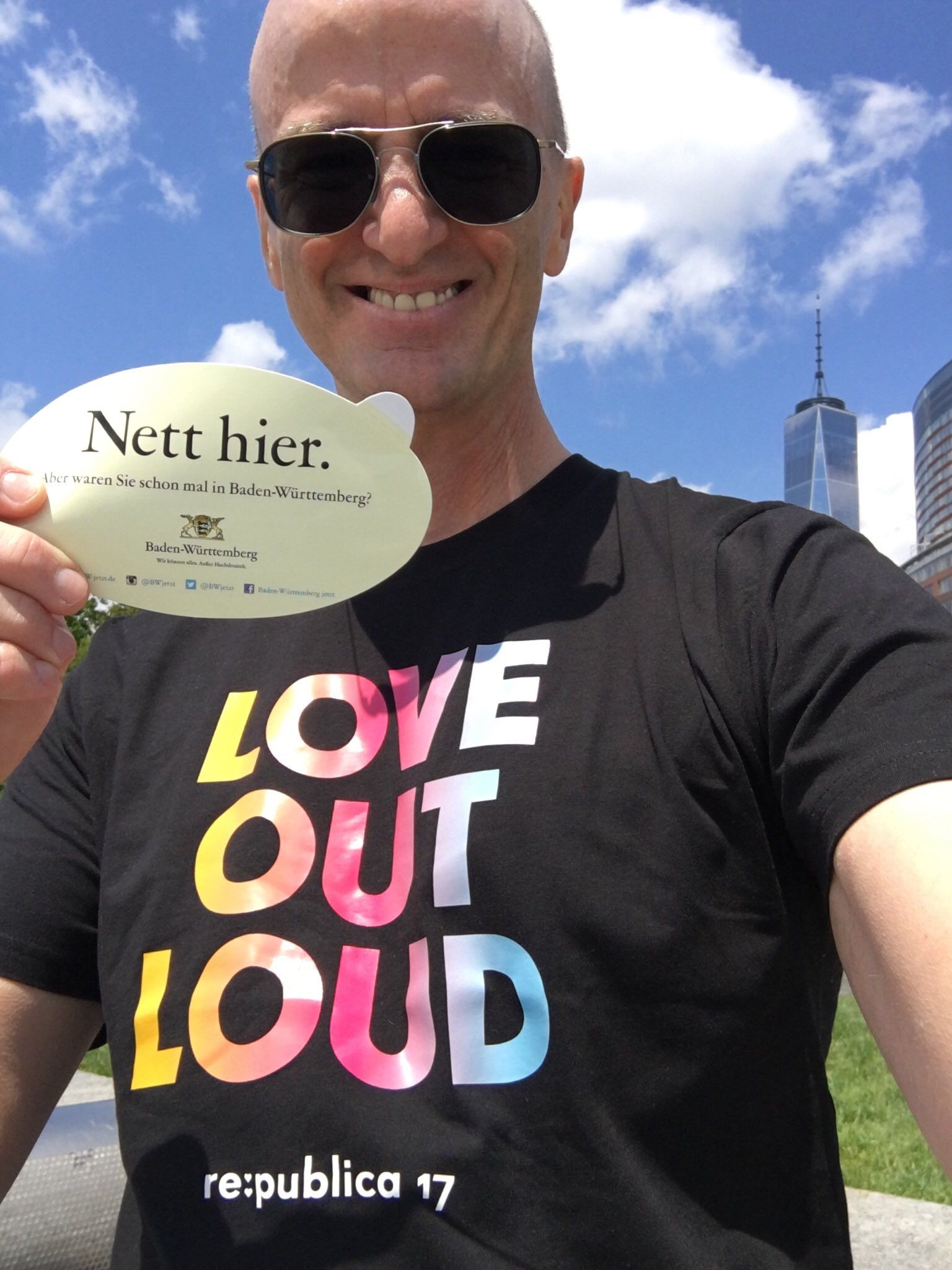
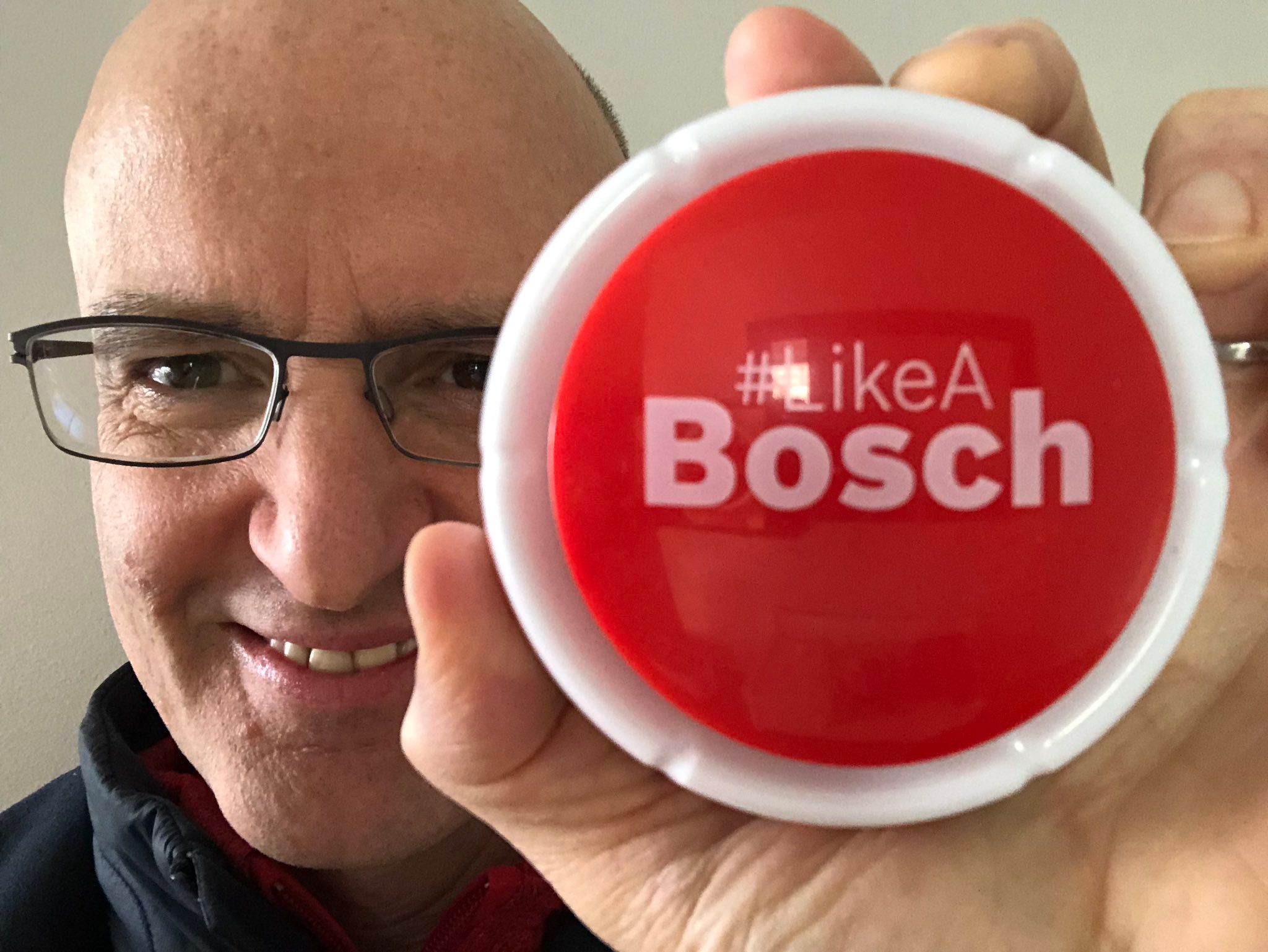

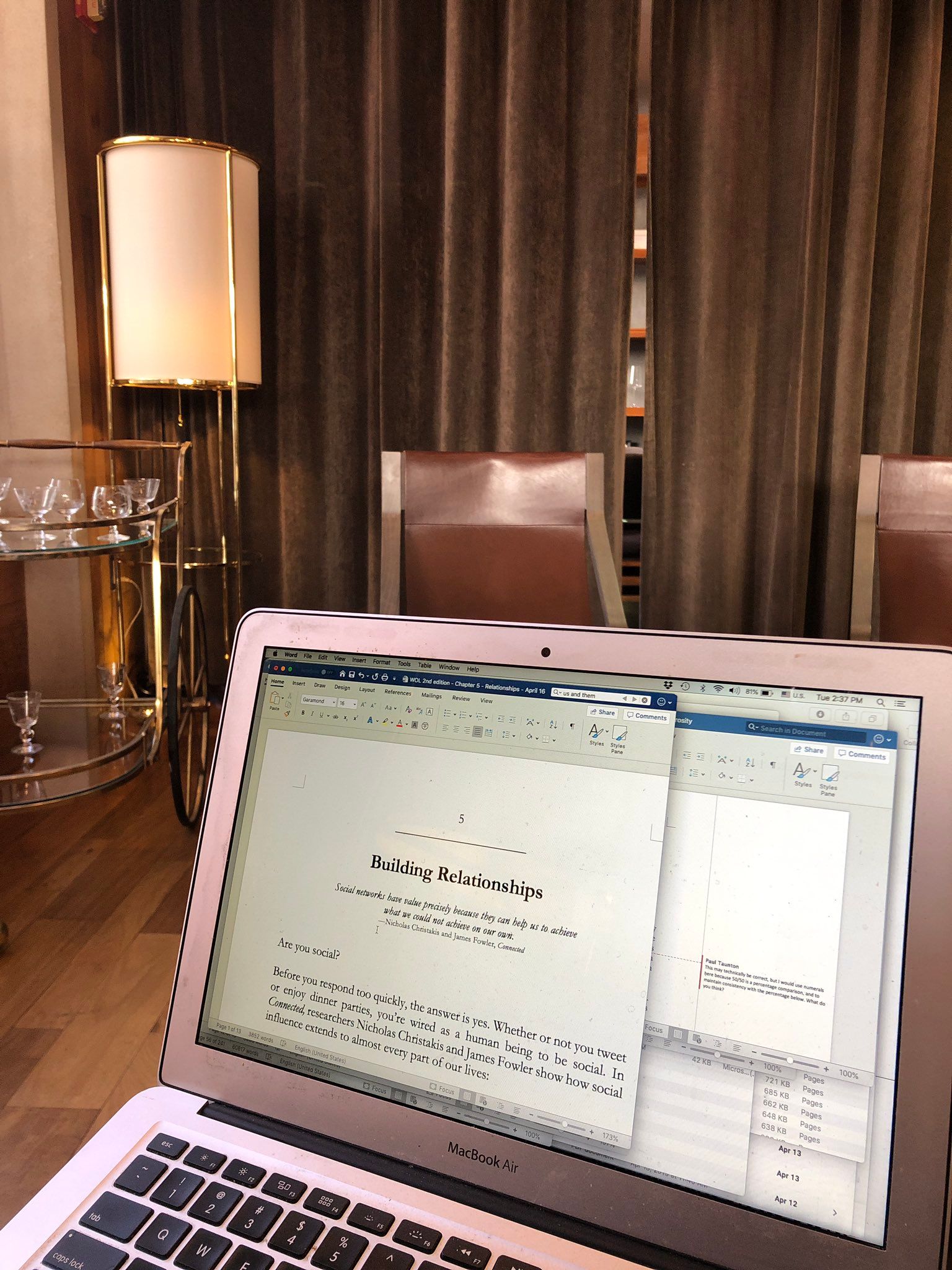


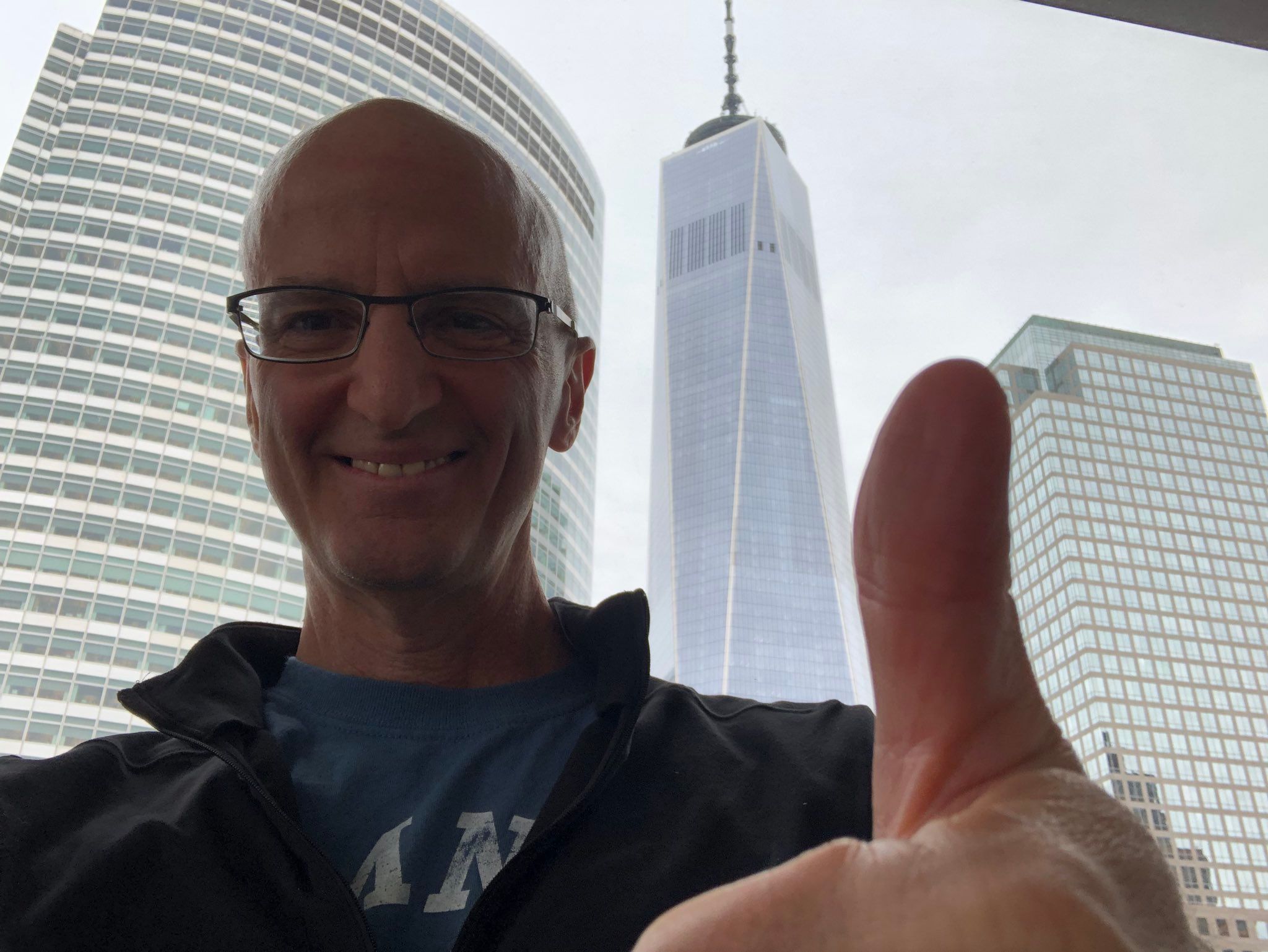
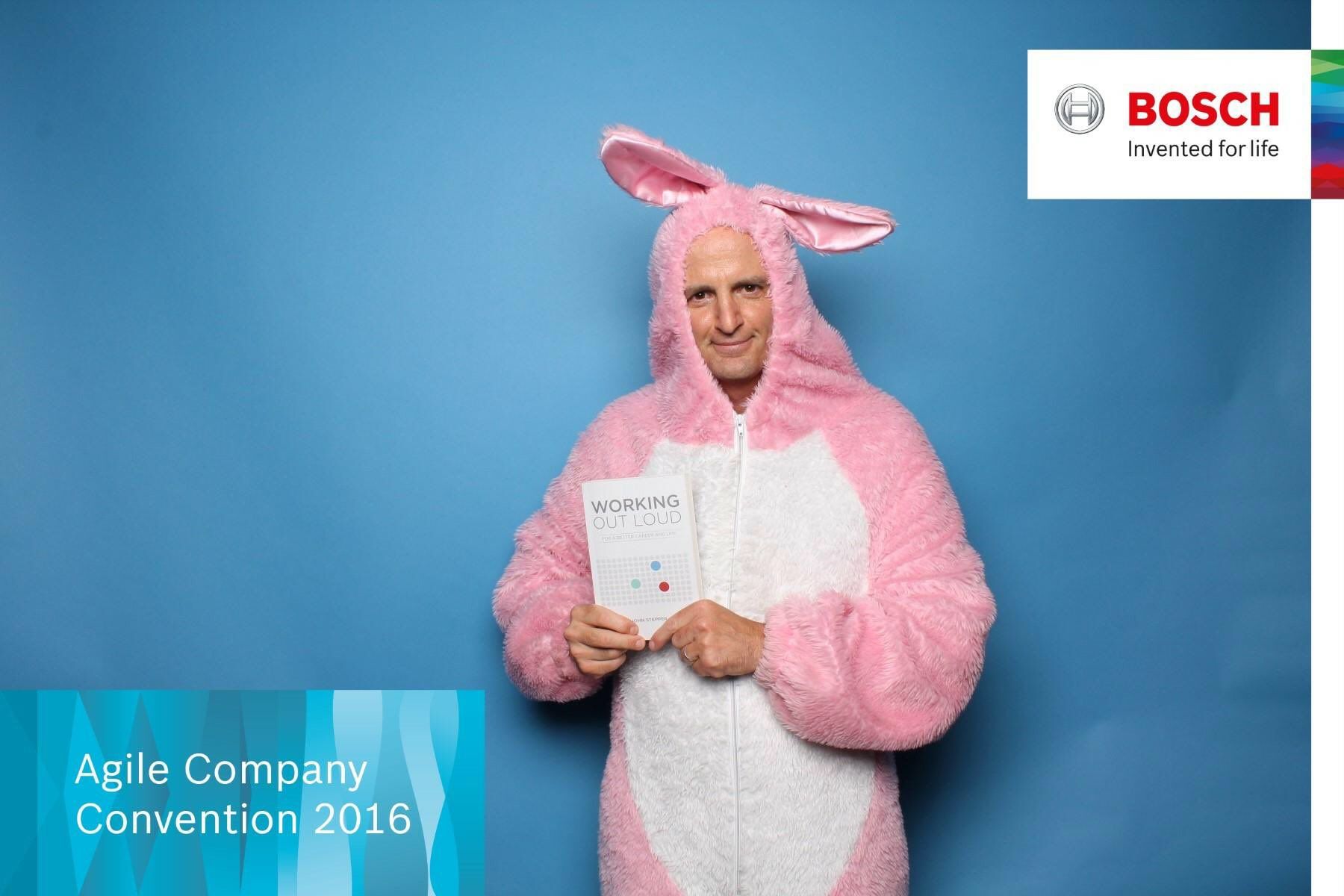
Credits
- Interview: Victoria Camblin
